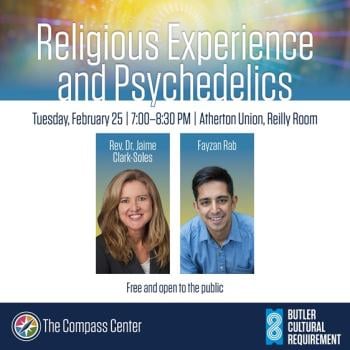There was a letter to the editor written by Tim Huggins, responding to my own op-ed piece in the Indianapolis Star recently. Below I will include the text of that letter, interspersed with comments and responses from me:
In his Jan. 21 My View, Butler University professor James McGrath presented his argument that young earth creationism involves “poor, and at times deceitful, biblical interpretation.” However, the ramblings in his letter were confusing if not outright untrue.
Unless Huggins’ letter is itself confusing and untrue, then this implies that my points may indeed be true. If they were confusing, that might indicate a failure on my part to communicate clearly, or a lack of basic acquaintance with what the Bible actually says in the original languages. Let’s see.
He states that young earth creationists reject the idea of a water vapor canopy surrounding the earth. This is utterly false. To the contrary, young earth creationists would insist upon the existence of this canopy. It is the collapse of this water canopy that created the worldwide flood in the days of Noah.
 I did not assert that young-earth creationists reject the water canopy. They make up a water canopy, instead of accepting the existence of a physical dome that holds up waters above, which is what Genesis 1 and other Biblical texts envisage. Huggins is thus either not aware of what the texts actually mean. It seems that he may choose to read only translations customized for those who believe they are Biblical literalists, with passages like Genesis 1-3 tweaked to avoid confronting them with things they cannot accept literally, thus perpetuating their mistaken and misguided approach to the Bible.
I did not assert that young-earth creationists reject the water canopy. They make up a water canopy, instead of accepting the existence of a physical dome that holds up waters above, which is what Genesis 1 and other Biblical texts envisage. Huggins is thus either not aware of what the texts actually mean. It seems that he may choose to read only translations customized for those who believe they are Biblical literalists, with passages like Genesis 1-3 tweaked to avoid confronting them with things they cannot accept literally, thus perpetuating their mistaken and misguided approach to the Bible.
McGrath also makes the assertion that young earth creationists twist the Bible to meet their needs. However, it is McGrath who is doing the twisting. He asserts that the six days of creation mentioned in Genesis 1 were not days at all. The Bible refers to each day as “an evening” and “a morning.” This is a 24-hour day. McGrath is the one who is twisting to Bible to make “day” mean something else.
I have never denied that the days in Genesis 1 are literal days, consisting of evening and morning. I just do not believe that they can be reconciled with the scientific evidence any more than the dome or the standing still of the sun or Paul’s references to the heart as the locus of thought, when taken literally. Some of the Bible is simply not scientifically accurate. It is not that the days are not literal, it is that there are things in the Bible which no one today can accept as scientifically accurate, and my point, which Higgins is either unaware of or is trying to avoid addressing directly, is that young-earth creationists “translate away” in a deceptive fashion some of the texts that present views of the natural world that they themselves cannot accept, thus, as I indicated in my op-ed piece, twisting the Bible selectively and failing to take it literally in a consistent fashion, in spite of their claims to do so.
May I suggest that McGrath view science through the lens of a literal interpretation of Scripture rather that trying to convolute the Bible to meet the needs of science? Science does not determine truth. Truth is a moral judgment. Science can only determine fact and even a cursory review of history will demonstrate that facts change quickly and often.
You may suggest it, but having previously taken this suggestion, I have good reasons not to make the mistake of doing so again. And as I pointed out, young-earth creationists are not taking the Bible literally anyway. As for facts changing quickly and often, that is frankly a bizarre idea which I doubt that Higgins himself accepts, at least not consistently. Perhaps he meant to say that science has changed its views over time. That is true, but there is good reason to believe that the changes represent improvements and not returns to pre-scientific views.
Please do further research on the actual beliefs of young earth creationism. May I suggest a visit to the Creation Museum in Petersburg, Ky.? While there you could speak with the scientists on staff.
Having been a young-earth creationist myself, I have done extensive research on the beliefs of young-earth creationism. I prefer not to visit the Creation “Museum” because I have a principled objection to funding the moneymaking schemes of charlatans. Also, the word “scientists” in the last sentence ought to have been in scare quotes. I suspect that none of those on the museum’s staff, even if they have degrees in the natural sciences, are actually engaged in research. Doing what science is all about seems to be anathema to those who deceitfully call their stance “creation science.” But at least Higgins’ letter seems to admit that his stance represents a rejection of science, which is refreshingly honest, even if the admission was inadvertent.
Tim Huggins
Greenwood
Cordially,
James McGrath












